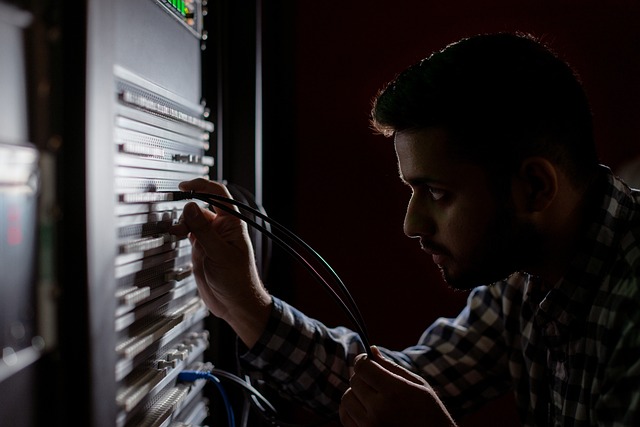How Is Biometric Technology Enhancing Security?
Let’s break it down. Traditional passwords and PINs are like keys that can be lost or stolen. But biometric traits—think fingerprints, iris scans, or facial recognition—are unique to each individual. It’s like having a lock that only responds to your own fingerprint. This makes it incredibly hard for someone else to gain unauthorized access.
Ever tried to remember a dozen different passwords? It’s a hassle. With biometrics, you bypass this problem because your unique traits are always with you. This technology simplifies authentication processes. Picture walking into a building, and the system recognizes your face or fingerprints instantly, granting you access without the need for a physical ID card. It’s seamless and effortless.
Biometric technology also steps up security by constantly evolving. For instance, facial recognition has improved to detect subtle changes in appearance, reducing the chances of fraud. It’s like having a security guard who not only knows you but also can recognize you even if you’ve changed your hairstyle or grown a beard.
What’s even cooler? Biometric systems often work in tandem with other security measures, creating a multi-layered defense. So, while biometrics handle the “who” part—who you are—other systems tackle the “what” part—what you’re allowed to do. This combination ensures a robust shield against unauthorized access.

Revolutionizing Safety: How Biometric Technology is Setting New Standards in Security
Think about it: our fingerprints are as unique as our DNA, and they don’t change over time. By integrating fingerprint scanners into various systems, security has moved beyond the limitations of passwords or keycards, which can be lost or stolen. Imagine the convenience and peace of mind knowing that only your one-of-a-kind fingerprint can unlock your phone or access sensitive areas at work.
But it doesn’t stop there. Facial recognition is another game-changer. It’s like having a digital gatekeeper that recognizes you instantly. With advanced algorithms, your device can identify you even if you’re wearing sunglasses or a hat. This means quicker access and enhanced security, making it nearly impossible for someone to impersonate you. It’s a bit like having a personal security guard that never takes a break.
Then there’s iris scanning, which takes biometric security to an even higher level. Our irises have intricate patterns that are virtually impossible to replicate. By analyzing these patterns, biometric systems can ensure that only authorized individuals gain access. It’s akin to having a high-tech lock that only opens for those with the perfect key—a key that’s part of you and you alone.
These technologies aren’t just sci-fi fantasies; they’re becoming integral parts of our everyday lives. From banking apps to high-security buildings, biometric technology is setting new standards in safety, making our interactions with technology more seamless and secure.
The Future of Protection: Biometric Innovations Transforming Security Measures
Biometric security relies on unique traits like fingerprints, iris patterns, and even voice recognition. Think of it as having your very own personal security guard who knows you inside and out. Unlike traditional systems, which can be stolen or forgotten, biometric identifiers are incredibly difficult to replicate. If you’ve ever marveled at how your phone can recognize your face in any light, you’re already familiar with one application of this tech.
But it doesn’t stop at unlocking devices. The ultimate goal is to embed this technology into every aspect of security, from banking to travel. Imagine breezing through airport security without ever needing to show your passport or waiting in line for a security check. Your biometric data could streamline processes, making them quicker and more secure.
Yet, this leap forward in security also brings challenges. With more personal data at stake, protecting this information from breaches becomes crucial. It’s like having a vault with a combination that only you know—but if someone figures out the combination, the consequences could be severe.
As we dive deeper into this biometric revolution, it’s clear that the future of protection lies in making security as seamless and robust as possible. The potential to redefine how we secure our personal and professional lives is vast, and it’s happening right before our eyes.
Beyond Passwords: How Biometrics are Shaping the Next Generation of Security
Think about it: Your fingerprint is as distinctive as your personality. No two people have the same pattern, making it a secure and personal way to lock and unlock your devices. And it’s not just about fingerprints. Facial recognition technology has come a long way, turning your face into a password that’s always with you—literally.
Now, imagine trying to impersonate someone using their face or fingerprint. It’s not just hard; it’s almost impossible! Biometrics add a layer of security that’s as personal as it gets. It’s like having a guard who knows exactly who you are, every single time.
But here’s where it gets even cooler: Biometrics aren’t just about unlocking your phone or laptop. They’re expanding into various sectors, from banking to healthcare. Ever heard of using your iris scan to access medical records? Or facial recognition to verify your identity for financial transactions? These advancements are pushing the boundaries of what we thought was possible.
What’s really exciting is how biometrics are evolving. Companies are working on combining multiple biometric factors, like your voice and your face, for even more robust security. It’s like having a super-secret code that’s uniquely yours and constantly adapting to make sure no one else can crack it.
From Fingerprints to Facial Recognition: The Rise of Biometric Security Solutions
Biometric security is like having a personal bouncer at the door of your digital and physical world. It’s not just about accessing your smartphone or unlocking your laptop anymore. It’s about stepping into a future where your body itself becomes the password. Think about how your fingerprint is as unique as your DNA, making it a virtually foolproof way to confirm your identity. It’s like having a lock that only opens for you, and you alone.
Then there’s facial recognition technology. Imagine walking up to your front door, and it opens automatically because it recognizes your face. It’s not just convenient; it’s futuristic. This technology uses complex algorithms to analyze the unique features of your face—like the distance between your eyes or the shape of your jawline. It’s as if your face becomes a living, breathing password.

Biometric security isn’t just a trend—it’s becoming the standard. And as it evolves, it’s clear that the future of security is written in the language of our own biology.
Biometric Breakthroughs: How Advanced Technologies are Fortifying Security Systems
Biometric technology uses traits like fingerprints, facial recognition, or even your voice to verify identity. Think of it as your personal security guard that never gets tired. Unlike passwords, which can be forgotten or stolen, your biometric data is inherently tied to you. This means that only you—or those with your specific traits—can gain access, making unauthorized entry nearly impossible.
For instance, facial recognition technology has taken a giant leap forward. Modern systems can distinguish between faces with remarkable accuracy, even in varying lighting conditions or when someone is wearing a hat. It’s like having a security system with eyes that never blink, ensuring only the right individuals are granted access.
Similarly, fingerprint scanners have evolved from basic readers to sophisticated sensors capable of analyzing multiple layers of skin. This extra layer of scrutiny adds a robust level of verification that’s almost foolproof. Imagine your fingerprint as a secret code that only your finger can input correctly.
These biometric advancements aren’t just about increasing security—they’re also about convenience. No more juggling keys or remembering complex passwords. With biometrics, your body becomes the key, seamlessly integrating into your daily routine.
Securing the Digital Age: The Role of Biometric Technology in Modern Security
Biometric technology uses characteristics like fingerprints, facial recognition, and even iris patterns to verify identity. Think of it as a digital fingerprint, but way more advanced. Your fingerprint is unique, just like a snowflake or a piece of art. And biometric systems leverage this uniqueness to ensure that only the right people access sensitive information.
Facial recognition is another game-changer. It’s almost like a superpower where your face becomes the key. Instead of fumbling for a password, you simply look at your device, and voilà! This technology is getting so precise that it can even recognize you in different lighting conditions or from various angles.
But it doesn’t stop there. Iris recognition takes security up a notch. The iris, the colored part of your eye, has intricate patterns that are nearly impossible to duplicate. It’s like having an uncrackable code that’s embedded in your own eyes.
These technologies don’t just boost security; they make it more user-friendly. Forget about remembering passwords or worrying about losing a key. With biometrics, security becomes as simple as being yourself. It’s like having a personal security guard who’s always on duty, ensuring that only you can access your digital world.
